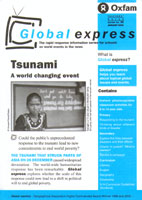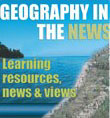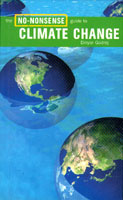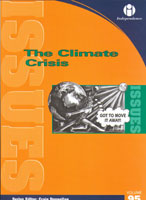SUGGESTIONS FOR SUPPLEMENTARY RESOURCES
Eye on Indonesia
Although the focus of the Eye on Indonesia/Tsunami page is different from most reports on Aceh Province, there is a wealth of useful resources on the tsunami for classroom use. For a comprehensive list of internet-based resources, visit www.sln.org.uk/geography.
Other useful sites include:
- Newsround
- www.geo-world.org/tsunami/index.html#
- Animations on the Guardian website:
| The February 2005 edition of the highly recommended Global Express includes activities that explore whether the public response to the tsunami could lead to a shift in political will to end global poverty. A hard copy of this edition is available from the Manchester Development Project for �2.50, or you can download a copy from www.dep.org.uk/globalexpress/. |
 |
To add a literacy-based element to studying conflict in Indonesia, passages from "The Redundancy of Courage" by Timothy Mo (Paddleless Press 1991) could be a useful resource. Nominated for the Booker Prize, the novel is based on the Indonesian army's invasion of East Timor in 1975, now an independent state.
The film, "A year of living dangerously" directed by Peter Weir and starring Mel Gibson and Sigourney Weaver is based in 1965 Indonesia during the overthrow of the Sukarno government and the beginning of President Suharto's 23 years in power.
Focus on Climate Change
For more elementary coverage of the issues of climate change, visit Global Eye Primary Summer 2002 - pages include on-line interactive activities for a younger age group (Key Stages 2-3) with a particular focus on the impact on the islands of the South Pacific.
Teachers involved in the OCR Geography GCSE Pilot project offer innovative ways of using the film, "The Day after Tomorrow" to explore climate change issues. You can download these from the Geographical Association website.
| In advance of their �Shout about Climate Change� week for schools (7-11 November 2005), Friends of the Earth are publishing a resource pack on climate change for 11-13 year olds in June 2005. The pack includes lesson plans and details of a poster/film competition - winners can meet a famous celebrity during the �Shout about Climate Change� week later in the year! For more details, email [email protected] or phone 020 7490 1555. |
 |
For a superb range of images taken by Magnum photographers to illustrate different aspects of climate change today, visit www.northsoutheastwest.org/. The images are taken from the NorthSouthEastWest exhibition that The Science Museum, Exhibition Road, London SW7 from March 14th - May 14th 2005.
For more futures scenarios in both map and text form, visit the UK Climate Impacts Programme website.
| "21st Century Debates: Climate Change" by Simon Scoones (updated paperback edition Hodder & Stoughton Childrens 2004) is part of the '21st Century Debates' library series. From floods and droughts to the spread of malaria, food shortage and sea level rises, this 64 page book looks at what scientists have discovered in the last fifty years and the different arguments about the future. It asks whether changes in climate are a result of human activities or if they are the result of a natural long-term cycle. Opposing viewpoints are given throughout to provide opportunities for discussion and debate. Available from the Geography section of www.hodderwayland.co.uk �7.99. |
|
| Visit Geography in the News for a range of articles gleaned from different sources. Look for 'Thaw Point', an article that asks whether climate change is a myth, and how we can modify the way we live instead, and'The Big Picture' that puts warnings of climate change in the UK in perspective. |
 |
Visit the Atmosphere, Climate and Environment Information Programme website for a range of downloadable fact sheets, teaching and activity packs on climate change, ozone depletion, weather & climate, acid rain and sustainability issues geared towards Key Stages 3, 4 and A Level. You can also request a free CD-ROM that includes all these resources.
Visit Tiempo Climate Newswatch for a variety of cartoons with a climate change theme that could be used to introduce some of the issues in the classroom.
Download a PDF version or order a copy of the report, "Up in Smoke" (October 2004) published by the New Economics Foundation that looks at the implications of climate change in meeting the Millennium Development Goals by 2015.
The New Scientist website has an excellent page on climate change with a range of articles, a timeline, more 'futures' scenarios, and links to other sites.
For a variety of contrasting arguments and perspectives on climate change gleaned from newspapers and journals that could be used to prepare students for a debate, visit www.globalwarmingissues.com.
Will Kyoto make a difference? Visit the BBC News site to find out a variety of views to this question.
Mark Lynas's website gives an up to date perspective on the Kyoto Protocol and other issues, including an opportunity to add to the discussion, and information on how to buy his book, "High Tide: News from a warming world". There are also images that show the changes in the Jacabamba glacier in northern Peru between 1980 and 2002.
| "The No-Nonsense Guide to Climate Change" by Dinyar Godrej (New Internationalist/Verso 2001) is a pocket-sized book with user-friendly background information on the issues, user-friendly for both teachers and for further research by pupils. This title along with others in this excellent series are available from Oxfam �7.00 |
 |
| "The Climate Crisis" by Craig Donnellan (ed) (Independence 2005) is Volume 95 of the "Issues" series that provides articles drawn from a variety of newspapers, magazines, government reports, etc to give different perspectives on global warming and climate change - its effects and solutions. Available from www.independence.co.uk �6.95. |
 |
Climate Prediction. Net is a UK-based project supported by the Nuffield Foundation for which students could contribute by providing data on their local climate which is fed into sophisticated computer models to predict climate patterns in the 21st century. The website also provides teaching resources, including a section of powerpoints, PDFs and lesson ideas for use with KS3-4 Geography classes.
The Canadian Government's website gives another all-round coverage of climate change issues, including maps and graphs, and a resources section for teachers and students.
Measuring Ecological and Carbon footprints - visit www.esd.rgs.org/ for an excellent site with masses of links and guidance on how to use measuring ecological and carbon footprints in the classroom. Managed by the Royal Geographical Society and funded by the DFES.
Future Forests were involved in the production of The Day After Tomorrow. Their website suggests ways for everyone to become carbon neutral. A potentially useful section for the classroom shows celebrity supporters and quotes.
For a sample of campaign websites focusing on climate change, visit:
- World Wide Fund for Nature
Friends of the Earth
Rising Tide
The Carbon Trust
More web links are featured on the Focus on Climate Change/Individual Action page.
CREDITS
Contributions and assistance from:
Ben Ballin (Teachers in Development Education (TIDEC), Birmingham), Clive Belgeonne (Manchester Development Education Project (DEP)), Steve Brace (Royal Geographical Society-Institute of British Geographers), Tristan Burton, Mark Kenber (The Climate Group), Caroline Creaby, Chris Read & Tom Thistlewaite (Environmental Investigation Agency), Jonathan Wolton (Royal Geographical Society-Institute of British Geographers).
Photographs:
Panos Pictures, Simon Scoones/Worldaware and Robin Scoones.